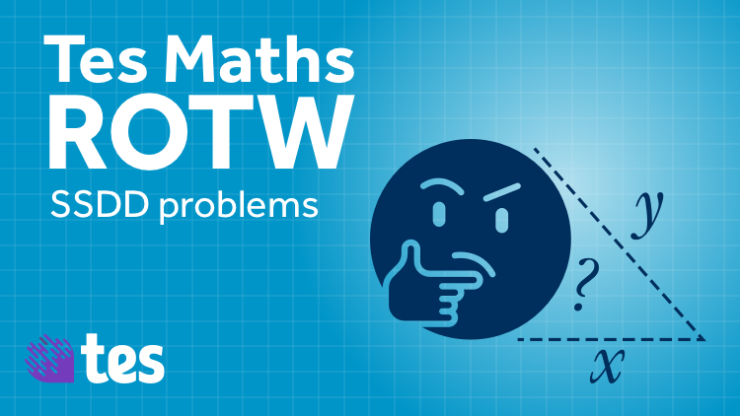To see all of the work I do for TES Maths, including Resource of the Week, Inspect the Spec, Pedagogy Place, Maths Newsletters and Topic Collections, please visit the TES Maths Blog here
What is it?
Throughout my teaching career I have been continually frustrated by many students’ apparent inability to select the correct method to answer a problem. Things that they can do perfectly well in the comfort of a lesson seem to elude them when faced with similar problems when presented in isolation in an exam.
In an attempt to address this, I devised the concept of SSDD problems – problems where the surface structure is very similar (i.e. the problems look the same), but the deep structures are different (i.e. the problems require different areas of maths to solve them).
It has been amazing to see teachers around the world create their own sets of SSDD problems and this resource by walkerad1 is one of my favourites. Students are presented with four identical set of grouped frequency tables, but asked to do four completely different things with them – calculate an estimate of the mean and draw a cumulative frequency diagram, histogram and frequency polygon. This forces students to think hard about exactly what the question is asking, and then plot a strategy to solve it.
How can it be used?
When I first gave a set of SSDD problems to my students, they struggled – they really struggled! They found it very difficult to identify exactly what area of maths each problem was focused on. They couldn’t cruise through on autopilot, which is often the case when the problems all cover the same area of maths. So, I had to help them at first, suggesting they look for clues, that they talk to each other, that they try things out. Eventually, my students got better, and started to develop into the strong, resilient competent problem solvers I always wanted them to be.
That is how I would use this resource. Present students with the final slide and see what happens. The earlier slides can then be used to offer support, for example, if a student cannot recall how to draw a histogram. But students must face that initial discomfort themselves, scouring their long-term memories to retrieve that particular area of maths. It is the kind of struggle that really pays off in the end.
Thanks so much for sharing
Craig Barton
Download: SSDD – Histograms, Estimated Mean, Cumulative Frequency, Frequency Polygon
View the author’s other resources
